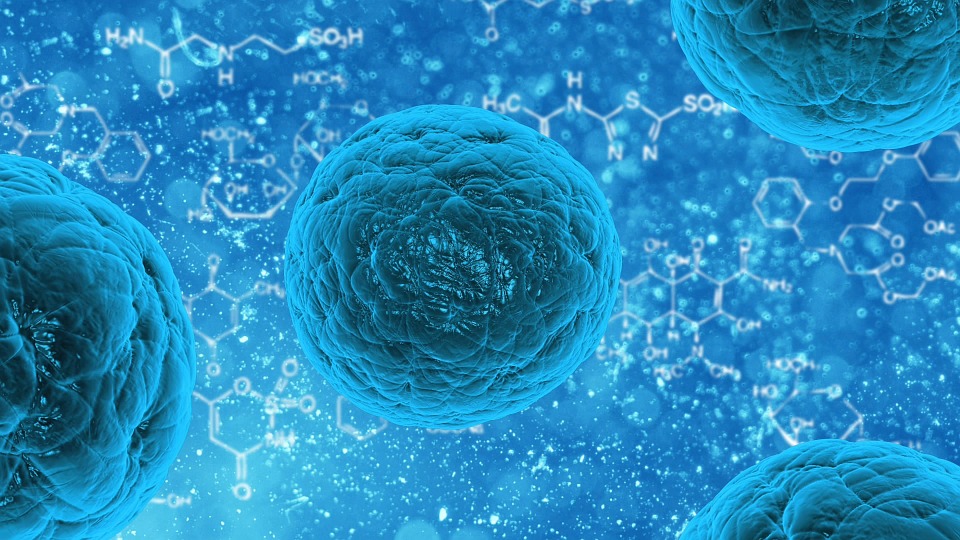When stem cells were discovered and characterized in the early 1960s through experiments with mice, the world of medical research was forever changed. Recognizing incredible potential to create treatments for previously untreatable diseases, stem cell researchers made much progress in the following years. In the ’80s and ’90s, the first stem cell line was developed from mice, leukemia was found to originate from stem cells, and in 1998, the powerful yet controversial embryonic stem cells (ESCs) were produced. (Did you notice how many marvelous things were achieved by messing with mice? And it gets even better!) But first, you may be wondering:
What is a stem cell?
There are many different types of stem cells, but they all have two defining features:
- the ability to self-renew, and
- the ability to differentiate into various cell types
These characteristics make stem cells useful in the treatment of many diseases, including M.S. and leukemia.
Stem cells can be either totipotent, multipotent, or pluripotent. A pluripotent cell can give rise to any cell type, but not to an entire organism. Both ESCs and iPSCs are pluripotent, which brings us to the next chapter in our story…
A groundbreaking discovery baffles everyone – and their mouse!
In 2006, Japanese scientist Shinya Yamanaka made a “groundbreaking discovery” that baffled scientists and rodents alike: specialized adult cells could be reprogrammed into stem cells, essentially turning back the clock by reversing development!!! Thus, the magical induced pluripotent stem cells, or iPSCs, were born. (Or perhaps I should say “de-born”.) Yamanaka did this by transfecting the cells with viral vectors containing four transgenic transcription factors – Oct4, Sox2, KLF4, and C-myc – also known as the “Yamanaka Factors”. Here’s how they work:
……Sheesh, click on the link already! You didn’t think I’d tell you myself, did you?
Further groundbreaking bafflement
Since 2006, there has been much progress in the field of iPSC research. Human iPSCs have been synthesized. Mankind has given back to our furry friends by treating hemophilia and sickle cell anemia in mice (it’s the least we could do for the poor little guys…well, it wasn’t really for the mice, but we don’t need to tell them that). iPSCs have been turned into heart cells, intestinal tissue, and a cute little mouse called Xiao Xiao. That’s right, a living, breathing, fuzzy, cuddly, itty-bitty mouse. If you don’t believe me, check this out. If you don’t believe those guys, follow some more links. If you still don’t believe it, you may have more than a healthy dose of skepticism and you could learn to be more open-minded.
Why is this so cool?
- A perfect match: iPSCs can be used for autotransplantation. If a patient’s own cells are used for treatment, the problem of transplant rejection by the immune system is eliminated.
- Because iPSCs are pluripotent, iPSCs may eventually become a substitute for ECSs, thus offering a solution to the embryonic stem cell controversy.
- Studying disease. Some cells (e.g., neurons) are difficult to study because obtaining them from patients would be rather inconvenient. However, if we take a patient’s skin cell (which has the same genetic material as all other cell types), turn it into an iPSC, and produce the type of cell affected by the disease, we can study and characterize a genetic disorder. In fact, scientists have already produced iPSCs from patients with SMA, ALS, and much more.

iPS cells – derivation and applications. Image by Michael Peitz, Johannes Jungverdorben and Michael Rossbach, EuroStemCell 2017 CC BY-NC 2.0 UK
A plethora of problems, past and present
Although IPSC research certainly is a promising and rapidly-progressing field, there are a number of challenges associated with iPSCs (some of which have been resolved):
- Incomplete reprogramming. When a bunch of cells are transfected, not all the cells fully transition to iPSC…but wait, given enough time, maybe they can.
- Inefficiency, “stemming” from the above. Because viral integration occurs randomly, the efficiency of stable iPSC production is low. Many methods that improve efficiency tend to increase the risk of:
- Cancer. When viruses insert their DNA into host genomes, it sometimes ends up in the wrong place, causes abnormal expression of the Yamanaka factors, and ultimately leads to cancer. All four genes are involved in tumour development, and C-myc in particular is quite the troublemaker. Scientists have (sort of) solved this problem by
- Using adenoviruses, which do not insert their genomes into host genomes
- Omitting c-Myc
- Swapping out c-Myc and Klf4 for two other genes
- Inefficiency. Methods a) and b) above tend to slow things down; thus, the battle between efficiency and un-canceryness continues.
- Inefficiency. The production of neurons and blood cells from iPSCs was found to be much slower than from ESCs. They also grew slower and died quicker.
There are many other challenges facing iPSC researchers, but I don’t want to discourage you, and I’d rather not go on. Good night.

Pixabay.com 2017 CC0 1.0
Hold on a minute! You mean that’s it?!?
Alright, now that we’ve cried ourselves to sleep over the confuzzlement of iPSC scientists and the sufferings of minute rodents – and awoken most refreshed – it’s time to talk about a very bright future. First, considering the stupendous potential of autotransplantation and pluripotency, iPSCs will likely be used to treat an enormous range of diseases. Second, scientists are learning why iPSCs are less “stemmy” than ESCs; they have identified epigenetic issues in both mice and humans. Better understanding of these problems should help us find solutions for inefficiency, hopefully without causing cancer – because I suppose it would be nice for the two to get along. (And, perhaps, to have effective treatments that don’t kill people). An added benefit: the less confuzzled scientists are, the happier (i.e., less dead) their mice will be. Someday induced pluripotent stem cells will, once again, baffle everyone…and their mouse.

Recent Comments